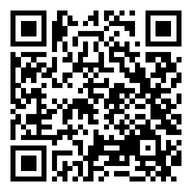Overview
Inline skating has become a popular form of exercise that combines traditional roller skating with ice skating by putting the wheels in the center. This decreases the stability of the skate. Inline skating requires more coordination for the beginner to learn safely. Inline skates, skateboards, and skate skis can reach speeds up to 25 mph.
Common injuries
The most common injury while using inline skates is a fall. This usually results in cuts, scrapes and bruises but can also result in broken bones or head injury. Inline skates have a very small base of support, so it is common for the novice skater to fall from a standing position. According to the Consumer Product Safety Board, over 400,000 inline skating and skateboard injuries were medically treated in 2009. The annual medical cost associated with that treatment was over a billion dollars.
What Can You do to Make Inline Skating Safer?
Skates:
- Boots should be snug on the foot but without putting too much pressure in any one spot.
- Shop for boots at the end of the day. Feet tend to change size throughout the day and they are the biggest at the end of the day.
- When buying boots, have your child wear socks similar to those which will be worn for skating so the fit will be the same.
- Make sure the heel is in the back of the boot before buckling and that the boot is snug enough that the heel cannot slide forward when skating.
Maintenance:
- Be sure the moving parts on your skates are in good repair.
- Make sure the skate shell and the buckles are working.
- Never do home repairs on your skates.
Safety Equipment:
- Always wear a helmet when using any play equipment where speeds could exceed a fast walk (bike, skis, skateboard, scooter).
- Wear appropriate wrist guards, knee and elbow pads.
Basic Skills:
- Warm up before skating to lessen the chance of muscle strain.
- Learn how to stop.
- Learn how to fall.
- Crouch to lower your center of gravity
- Try to land on fleshy parts of the body (buttocks or thighs rather than elbows or head)
- Roll when you fall.
Common Sense:
- Do not use inline skates where there is car traffic.
- Avoid crowded sidewalks.
- Maintain a speed which you can easily control.
- Do not inline skate on wet, sandy or icy surfaces.
- Never inline skate at dusk, dawn or in the dark.
- Do not use head phones while inline skating as you may miss a warning yell, horn or siren.
- Do not hold onto any moving object while inline skating.
More Information
Page QR Code:


 POSNA.org
POSNA.org
